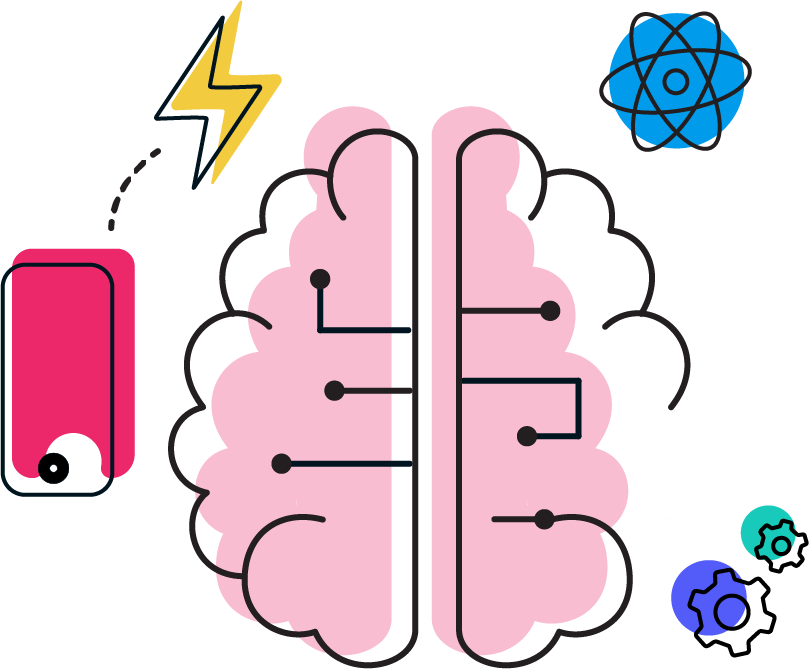


Five stages for brands eager to develop stronger ad creative across multiple departments
Personalization — the ability to deliver a more relevant and engaging message to individual consumers — is a central promise of digital marketing. Thanks to marketing technology, brands have an ever-growing number of data signals they can leverage to communicate with their customers and prospects based on a wide range of criteria, from contextual triggers and simple demographic attributes to detailed purchase‑intent data. Despite myriad online tools available to marketers, the promise has yet to be fulfilled.
Personalization remains a tall order. Its possibility does not mean that every company is equipped or mature enough to realize its promise. All the data in the world isn't terribly useful if marketers can't put it to work — and putting it to work requires organizational capability at multiple levels of the marketing enterprise.
Personalization is not a matter of simply aggregating data across various first- and third-party sources. That part is actually pretty straightforward. The more challenging parts include developing the creative strategies that can leverage the data in a responsible manner, fostering new collaboration models between the media and creative teams, measuring creative performance, and institutionalizing the knowledge. Only the most mature marketing departments have the agility and knowledge to generate real value from today's data and technology, which is enabling marketers to craft relevant and personalized messaging at each and every stage of the customer journey.
In this respect, brands differ widely in their organizational maturity around dynamic creative. The size of the marketing program and the availability of complex technologies do not mean that the organization is sophisticated enough to use them.
Capability development requires serious investment in people, process, and technology. Understanding where to invest can be difficult, considering that needs differ widely by sector and by country of operation. For this reason, brands need a clear and authoritative benchmark for assessing organizational maturity around dynamic creative.
It's useful to apply the organizational Capability Maturity Model Integration (CMMI), first developed by Carnegie Mellon University in 1986 to benchmark the institutional capability of IT organizations.
Maturity models define five stages of progressive capabilities, outlining "a staged path for an organization's performance and process improvement efforts." Each stage builds on the previous one by adding new functionality or rigor.
The pathway sets out how companies can get their hands around dynamic creative personalization for marketing. The aim is to provide brands with a clear framework for developing overall dynamic creative competency across the multiple departments that need to collaborate to make it a reality. The pathway also establishes a critical nexus where marketing, advertising, technology, analytics, creative, and media agencies converge and operate in an integrated fashion.
Stage 1: Production Efficiency
Efficiency in producing creative is the first and most foundational stage in overall organizational maturity. Organizations that have mastered production efficiency typically use a flexible framework for creative, rather than static templates that cannot be personalized around dynamic signals. They keep their creative assets organized and coded so that they can be deployed seamlessly. And they maintain the organized creative assets so that they can be shared among all of the various players in the creative supply chain.
From an organizational standpoint, it is possible for the creative team to pursue creative production efficiencies with limited involvement from the media and analytics departments. It is largely a question of instituting standard naming conventions and consistent conventions for metadata. This is a matter of creative leaders using technologies such as digital asset management (DAM) and multiplatform ad-building tools. Efficient production of creative minimizes the friction of adapting creative concepts across channels, formats, geographies, and languages.
Production efficiency manifests in the form of increased productivity and creative output, such as the number of creative versions per creative team member and a more cost-efficient process.
Stage 2: Agility
Once an organization can efficiently produce creative, the next challenge is to bring it to bear with both speed and agility. For some organizations, agility is a core business requirement to getting offers in and out of market quickly.
For example, many automotive original equipment manufacturers, telecom, travel, and retail companies frequently change their promotional offers and rely on message agility to get the word out across several audiences and/or geographies. Agility also enables brands to respond with alacrity to competitive offers, products, and messages. As the coronavirus pandemic amply demonstrates, advertises need a flexible approach to update in-market messages as situations on the ground change. Agility can be measured by the ease and speed with which a brand is able to introduce new creative into market, (i.e., the time it takes from when a brand decides to adjust its creative to when the campaign is executed).
Beyond meeting a core business requirement, agility also gives advertisers the opportunity to test offers and different creative and to optimize campaigns mid-flight based on the strongest performing combinations. It is at this point where analytics executives play an increasingly central role in fostering organizational agility. Armed with centralized creative servers, analytics can provide marketers with a comprehensive view of a campaign's performance.
When the centralized server or trafficking system is itself agile — and doesn't need to retraffic tags to react to performance signals — the process works even more effectively. No matter the level of technological sophistication, agility requires that organizations adopt streamlined approval processes and test standards to ensure that all stakeholders can reach decisions quickly enough to capitalize on the moment.
Stage 3: Contextual Relevance
Organizations that have mastered contextual relevance execute creative concepts that build personal relevance based on physical and online factors, such as device type, date and time, physical context (e.g., whether at home or in an office), and online context (i.e., the type of content consumers are viewing, such as financial, sports, or home improvement).
Whereas agility and production efficiency initiatives can typically fall within the domain of the creative team, contextual relevance requires a new creative messaging strategy designed in collaboration between the creative and media teams.
Contextual relevance also requires that brands establish a single point of accountability for the advertiser's personalization initiatives. "Personalization coordinators," or similar titles, describe the people responsible for ensuring that the full breadth of contextual signals are registered, considered, and optimized. Beyond concentrating accountability for personalization, organizational maturity at this stage generally implies the adoption of dynamic creative, targeting various technologies.
Stage 4: Personal Relevance
Organizations that master personal relevance combine contextual signals with additional layers of data. Data points focus on the individual consumer, gender, education, income, children, past product usage, and interests. It also includes online behavioral data, which, in a post-cookie era, generally means interaction with the brand's website or other online properties. All told, personal relevance means refining the understanding of context to an understanding of an individual within that context.
Brands that have reached this stage of maturity typically have professionals dedicated entirely to the work of data management and segmentation. These organizations typically exercise centralized control regarding the definition and use of their mission-critical audiences across the business. They employ large-scale data management technologies, like customer data platforms (CDPs) and data management platforms (DMPs), and work closely with their legal department to ensure that data collection and governance comply with regulations.
Achieving success in stages three and four is best measured by overall return on ad spend (ROAS). Keep in mind that personalized creative performs up to seven times better than standard ads.
Stage 5: Personal Relevance for the Long Haul
The final step to maturity comes with brands' mastery of personal relevance for the duration, meaning the ability to execute creative concepts that deepen brand engagement and personal relevance throughout every stage of a coherently mapped customer journey. Once a brand has the ability to personalize for individuals and their present context, the next step is to map each touchpoint on top of the last one, keenly understanding the frequency and sequence of each message and how one layers on top of the next.
Analytics sophistication is a clear hallmark of this stage of maturity. The same leaders who guide a brand's agility in personalizing creative can, with the right tools, deploy longitudinal tracking and linear TV modeling to determine the proper frequency, tone, and tenor of a brand's efforts to reach the customer.
But it would be wrong to say that personal relevance for the long haul belongs to analytics alone. To be sure, the final stage of maturity might manifest in ornate analytical models, but at a practical level it requires all stakeholders collaborating efficiently and firing on all cylinders. Most important, it requires that the first four stages be firmly ingrained as core competencies.
The true measure of the fifth stage, maturity, is customer lifetime value (LTV), which is also the true measure of effectiveness for the whole enterprise of digital creative personalization. Companies that consistently treat people as individuals will win them over and foster brand loyalty.
A Sense of Urgency
The impetus for adapting the CMMI framework to dynamic creative personalization is not an idle exercise in business schematics. Dynamic creative personalization not only works, it is quickly becoming table stakes. The need for these capabilities is truly urgent; so is the need for each brand to clearly understand its starting point.
Fully developed dynamic creative capabilities empower brands to tell a story across successive moments throughout the customer journey. It's the final promise of compelling brand storytelling and, increasingly, the experience consumers expect.
By John Nardone, CEO
Originally published by the ANA







